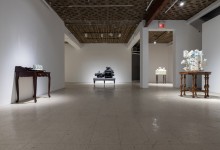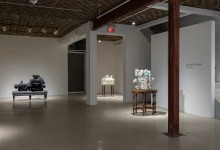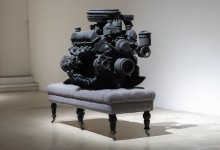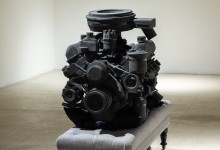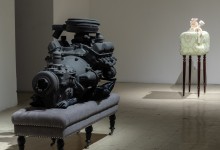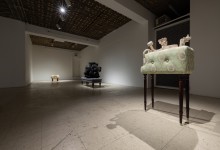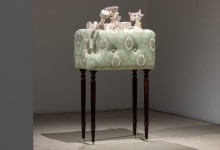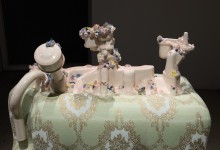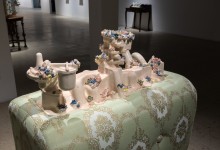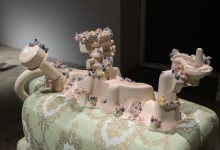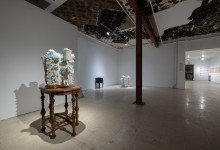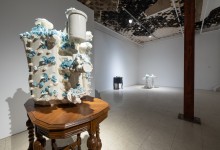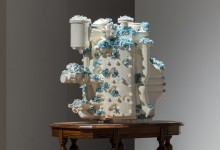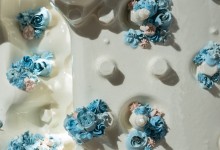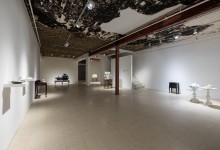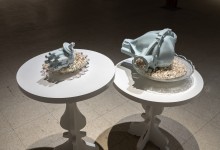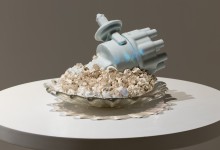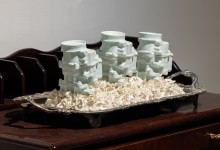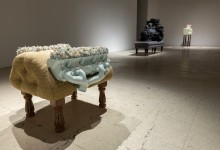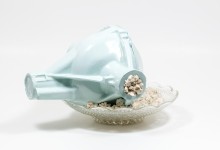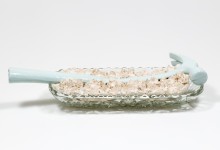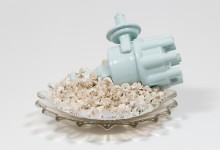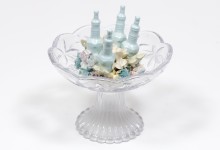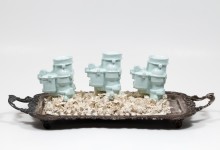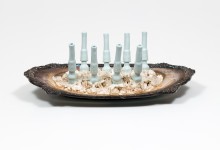Opening reception: Saturday, January 7, 2023, from 3:00 pm to 5:00 pm
Clint Neufeld : All hat No cattle
The Artful Unfamiliarity of Clint Neufeld’s Work
Text by Yann Martel
The first work of Clint Neufeld I ever saw was a hulking engine rendered in pink and lime green ceramic, so large that it hung from its own crane. It was called Screaming Jimmy, the first time we met in that field I knew you were the one and it occupied a corner of his studio. It had that instant charisma that works of art can have, whereby your eyes are drawn to it and your mind immediately starts trying to process what it is seeing.
I was right away struck by the balance between the familiar and the unfamiliar. I looked and I thought, “That’s an engine, presumably of a tractor or a truck it’s so big”. Of course, it was not an engine. Like Magritte’s “Ceci n’est pas une pipe”—because it’s a painting of a pipe—Neufeld’s engine was an imitation of an engine, something not usually held to be attractive, but here, taken out of the grimy shop, cleaned, replicated, coloured and glazed, made absolutely beautiful, shockingly so.
It brought back a powerful memory: once, while travelling in Iran, I came upon an enormous power station on the shore of the Caspian Sea—a colossal complex, old and worn, purely utilitarian, endlessly fed cheap Iranian oil—and I thought, “Wow! What a thing of beauty!” In the way time and moisture had decided on how the metal parts were mottled with rust and how the painted parts were chipped and faded, in the way the complex was purely meant to function and not appear, it looked not industrial but organic, a living creature nestled along a coastline, surprised at the sight of a Canadian backpacker.
In a same way, I reacted to Neufeld’s work, liking the Duchampesque statement This is art of it and the open dialogue it started in my mind. Neufeld’s method is a clear one, repeated and varied for the last few years. A putatively ugly thing, traditionally masculine and utilitarian, is rendered in ceramic, an explicitly beautiful and delicate material. Not only that: glazed in soft, pastel colours. More than that: glazed and decorated with floral motifs. Sometimes even more: the flowers are made explicit—they grow out of or around the engine parts. Then the whole is removed from its habitual outside context and brought inside, into the domestic arena, where it might be set on a sofa or a tray or a glass dish, borrowings or, in some cases, imitations of cozy comfort.
What to make of this conflation of the brutish and the refined? The hard and the soft? The useful and the useless?
To each viewer his or her path. I seek no answers, I just go along in that tippy balance between what I know and what I don’t, between the ugly and the beautiful, the masculine and the feminine, the functional and the not, the outer and the inner. In the end, that’s what I am, a tippy balance, a hope that I am both engine and flower, useful and not, as alive as a power station.


